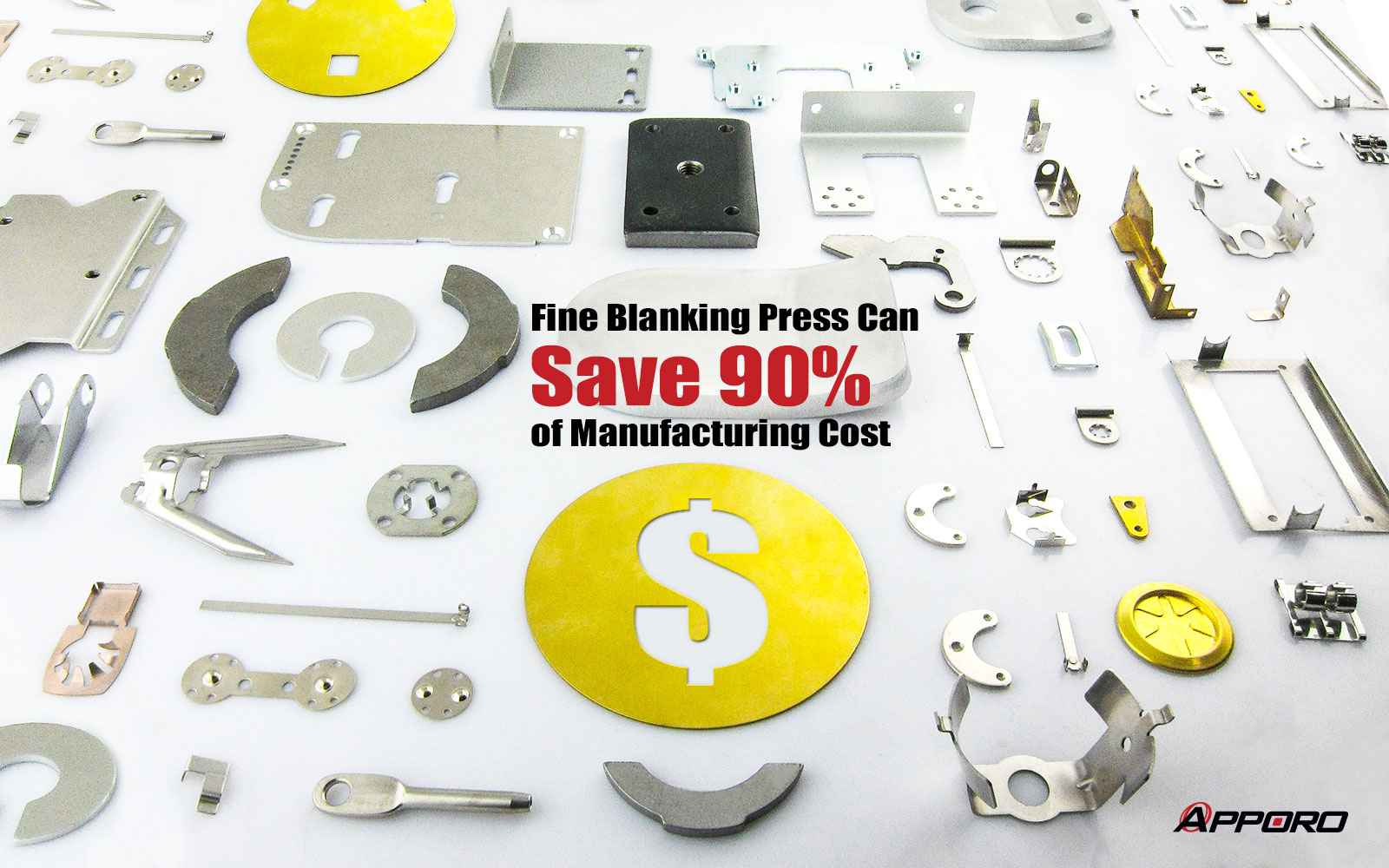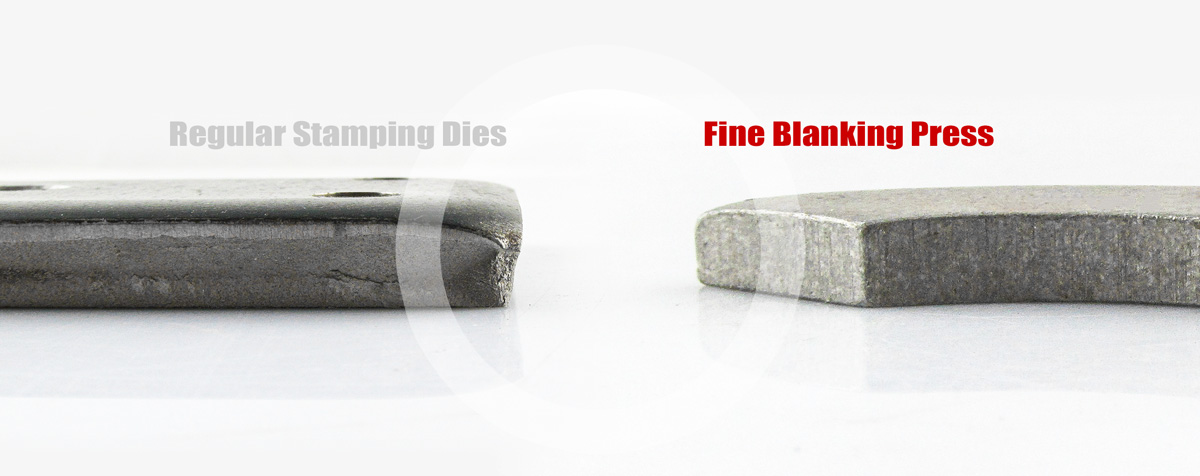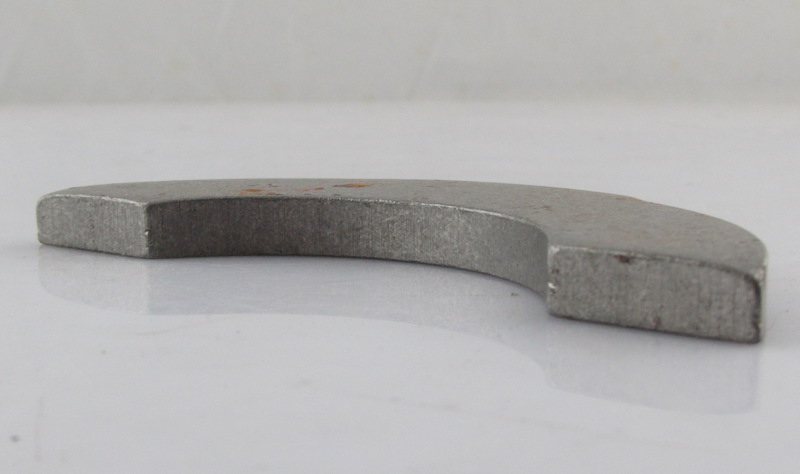Fine Blanking Press Can Save 90% of Manufacturing Cost2019-02-20

Stamping is a manufacturing method which shapes sheet materials rapidly through procedures like shearing, blanking and bending. Stamping features the precise, mass, economic and effective production that it can produce fast and repetitively. We will talk about the difference between regular stamping die and fine blanking press later. Before, APPORO also shared a case study on progressive stamping die here: https://www.apporo-cnc.com/news_detail.php?menu_s=400&sn=52&page=0
The cut edge of a finished product of regular stamping die is usually rough and deformed with obvious cracks, and of parts with more thickness, this condition becomes more apparent. This happens because when regular stamping dies function, they push the punches to bend and cut the materials, and then remove the finished cut part or waste materials from the sheet materials. If there is a need for precise assembly on the cut edge, a secondary processing work will then be inevitable to fix the cut edge. Otherwise, if there is no need for the precise assembly or cosmetic purpose on the cut edge, regular stamping dies will be a utility option for mass production.

How to reduce the cost of production? Instead of using poor-quality materials, look for advanced production techniques!
For example, the picture below is a counterweight part of a measuring device. As the counterweight part is not for cosmetic purpose and its cut edge is not for assembly, it is appropriate to use regular stamping dies to mass produce.
The counterweight part is made of SPHC materials with 10mm thickness. Manufactured with regular stamping dies, the cut edge of the part is rough with the bend and deformation.
Fine Blanking Press
Fine blanking press provides parts with the smooth and vertical cut edge with precise dimension tolerance. Compared with regular stamping dies, the design of dies of fine blanking press has many differences. Take the blanking dies for fine blanking press as an example. There will be V-shaped convex rings designed around the upper stamping plate near the fringe of the cut edge. While blanking, the upper and lower plates will clamp the parts. After that, the blanking punches will fall to cut the sheet materials. Meanwhile, there will be ejectors same size of the blanking punches with counter-pressure below to withstand the sheet materials upward, ensuring that the cut edge of the sheet materials will not bend and deform after cut. Generally speaking, the width of the cracks between the blanking punches of fine blanking press and the upper/lower plates will roughly be 0.5% as much thickness of the sheet materials. That is almost 1/10 as much width of the cracks of traditional stamping dies, so as to prevent the cut edge from tearing.
The pole piece is made of SPHC materials with 6mm thickness. Manufactured with fine blanking press, the cut edge of the part are smooth and vertical, which is not second to the quality manufactured with milling or laser cutting.
With the numerous features above, fine blanking press dies are quite suitable for manufacturing 2-dimensional parts. Also, when it comes to mass production, fine blanking press has an advantage in its low cost compared to CNC milling and laser cutting. As what is stated above, if we use CNC milling for 2-dimensional parts with precise assembly and cosmetic purposes, the parts will have high precision but with high manufacturing cost and low efficiency. If we use laser cutting, although the manufacturing cost is low and the efficiency is high, the dimension precision is lower, only +/-0.2mm tolerances. Besides, it is easy to have burned marks, sharp edges, and burrs on the cut edge when we use laser cutting, so we will need secondary processing to reach enough precision and cosmetic requirements, and the manufacturing costs and procedures will then increase. If you plan to cut down the manufacturing cost, increase the manufacturing efficiency, and have the needs of precise assembly and cosmetic appearance, take fine blanking press into consideration for your projects.
Learn more about stamping: Progressive Stamping Mold: Spacing Limitation


